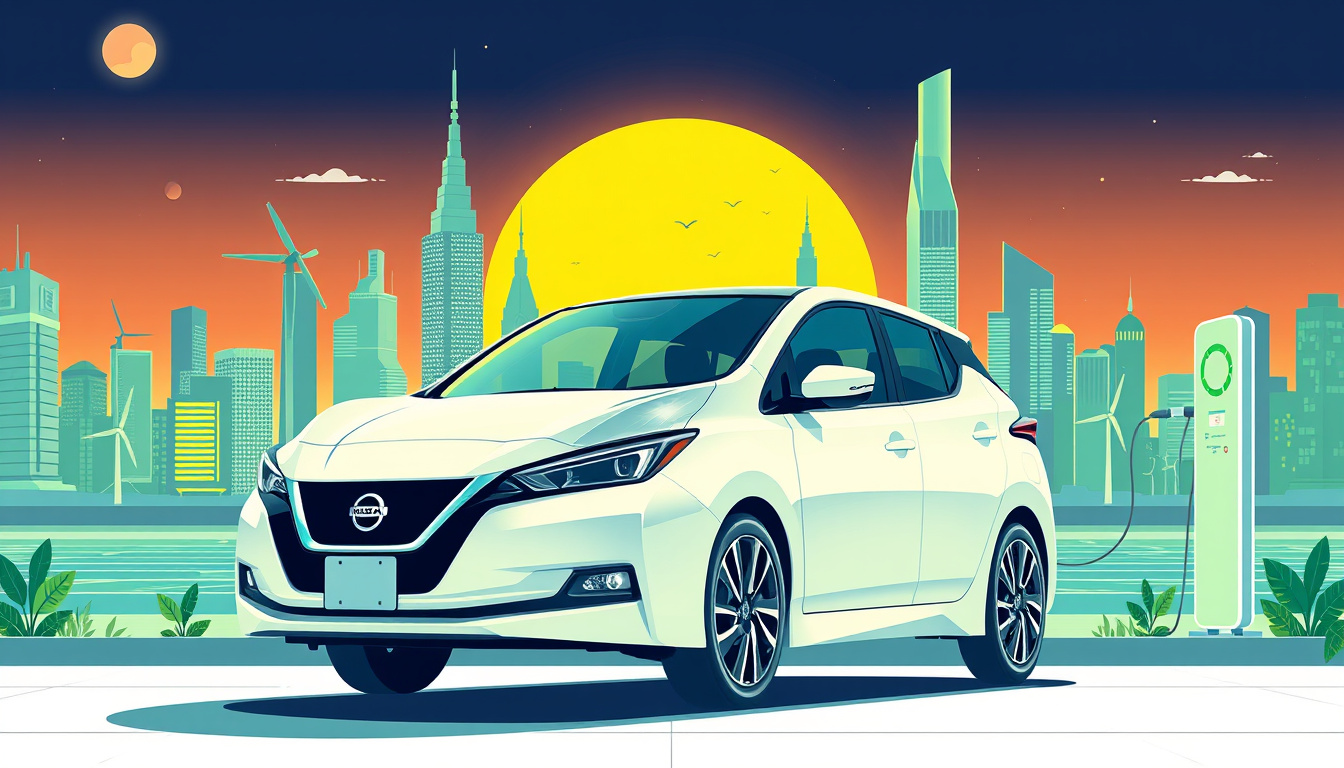Changing Green Driving: The 2008 Launch of the Nissan Leaf and Its Impact on Electric Vehicles
The Nissan Leaf launched a new road in the auto industry. In 2008, Nissan planned the Leaf. In 2009, they showed it to the world. The Leaf was the first mass-built battery electric car that many could afford. It set a firm mark for cars with no tailpipe emissions and pushed car makers to think about electric cars.

The Start of a Green Shift
Before the Leaf, Nissan tried electric cars. In the late 1990s, Nissan made a few cars like the Nissan Altra and the Nissan Hypermini in Japan. These cars drove less far and came in small numbers. They stayed on the edge of everyday driving.
The Leaf came as a strong step forward. Nissan worked hard to build a car with zero emissions that everyday buyers could choose. On August 1, 2009, Nissan Motor Co., Ltd. showed the Leaf to the world. The car spoke of a new time that cared for the air, was practical, and stayed within reach.
Built for Daily Use with Real Needs in Mind
The Nissan Leaf came as a small 5-door hatchback. Its shape spoke of its new ideas. The name "LEAF" stands for "Leading Environmentally-friendly Affordable Family car". Nissan made this car for many people.
Key features include:
- Zero-emission engine: An 80 kW electric motor with 110 hp and 280 Nm of torque gives a drive that feels like a usual car, yet leaves no emissions.
- Battery power: A 24 kWh lithium-ion battery pack sits under the floor between the wheels. This keeps the inside space open and handles the car well. It drives more than 160 kilometers (100 miles) in regular use.
- Charging: A simple 220V home outlet can charge the car overnight in about eight hours. A quick charge brings the battery to 80% in 30 minutes.
- Smart connection: A modern system shows the battery state, range, and nearby spots to recharge. It works with mobile devices to let drivers control functions from afar.
- Cost and care: With fewer moving parts than gas cars, the Leaf cuts down on maintenance. It also fits with government plans to support clean cars.
Building and Bringing the Car to Market
Nissan began making the Leaf in October 2010 at the Oppama plant in Japan. Soon, production also started in Smyrna, Tennessee, and in Sunderland, UK. Nissan planned to make 250,000 cars a year for the world. Even when nature or currency shifts made it hard in 2011, Nissan kept to its plan. They worked to improve the build and lower costs by making battery packs in the United States.
The Leaf came at the same time in Japan, the United States, and Europe. Nissan aimed to bring the clean car to many nations. Its price stood near that of fully equipped small cars. Tax credits in many places helped many people choose an electric car.
How the Industry Saw It and What It Left Behind
Critics saw the Leaf as a strong jump toward everyday electric cars. Some noted that the inside felt modest and the range was less than that of many gas cars. Yet, the Leaf felt good to drive and met the promise of no emissions. It earned many awards like the 2010 Green Car Vision Award, 2011 European Car of the Year, and 2011 World Car of the Year.
Later models of the Leaf added more battery power and new systems to help drivers. This kept the Leaf strong in a busy market.
Its Mark on the Electric Car Market and Look Ahead
The 2008 plan and later release of the Nissan Leaf sped up the spread of electric vehicles worldwide. The car proved that a no-emission family car can meet the demands of daily life. Its success pushed other makers to create affordable electric cars. The change in cars led to more work on batteries, charging spots, and rules that support clean energy.
Conclusion
The start of the Nissan Leaf was more than a car release. It set a new line in car design and questions old ways. With a mix of smart design, fair cost, and new electric power, Nissan led the way for electric vehicles. The Leaf lives on in the search for cars that cut pollution and guide the future of driving around the world.
———————————————————
Voltsandvolts.com is a blog dedicated to electric vehicles (EVs). Our blog features articles on EV reviews, stories, tips, tricks, charging infrastructure, and battery technology. Join the conversation and become part of the Voltsandvolts.com community today!
